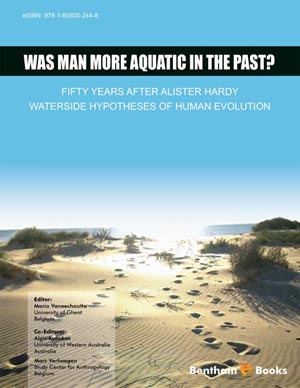Abstract
For over 150 years the field of palaeo-anthropology has grappled with several problems of understanding human evolution, notably those explaining key differences between human beings and our most closely related species, the African great apes. The first difference to be explained, perhaps in terms of importance but certainly in terms of chronology, is our bipedality.
This chapter will review the models of hominin bipedal origins published to date, and categorize them, as was done by Rose [1], by the adaptive mechanism being suggested. In addition, it will propose a new evaluative framework against which each model may be assessed and compared. In this evaluation, published wading models appear to be among the strongest although they are among the least well reported in university-level text books, a discrepancy attributed here to their association with the so-called ‘ aquatic ape hypothesis’ (AAH). Despite their apparent strengths, published wading models do nevertheless contain weaknesses. This chapter addresses a few of those weaknesses either theoretically or through studies, such as one obtaining new empirical data comparing the energy efficiency of different bipedal gaits in water. Furthermore, a series of falsifiable predictions of the wading hypothesis are made about the postcranial anatomy of australopithecines.
The chapter concludes by proposing a specific timescale and ecological niche where such wading behavior could have provided a stable evolutionary scenario in early hominins that is compatible with the fossil record and other models of human evolution.
Keywords: Bipedalism, hominin bipedal origins, wading













